#GLBT Reference Group
Explore tagged Tumblr posts
Photo

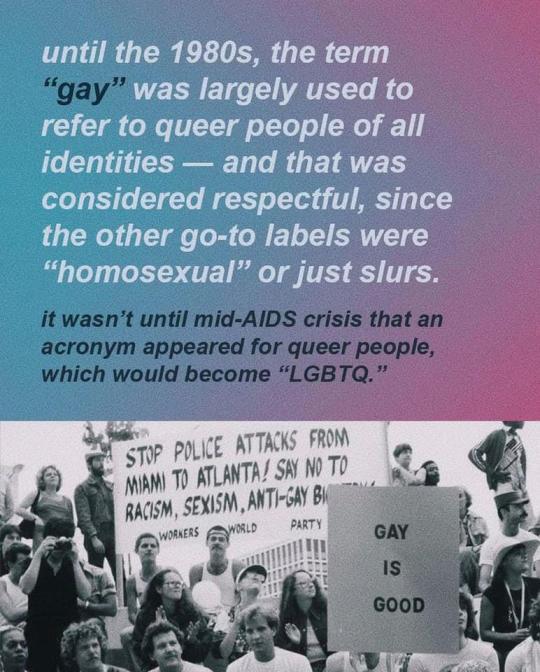
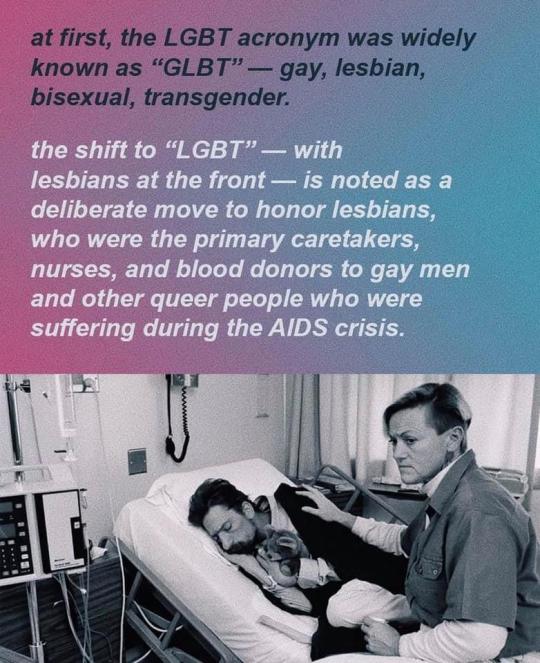
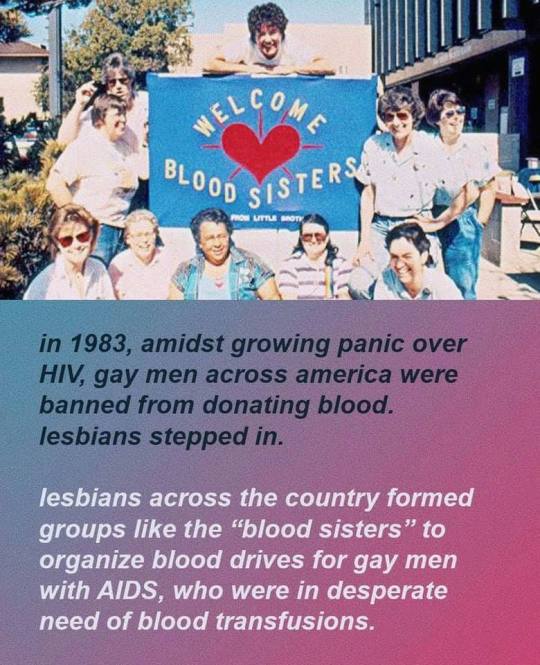
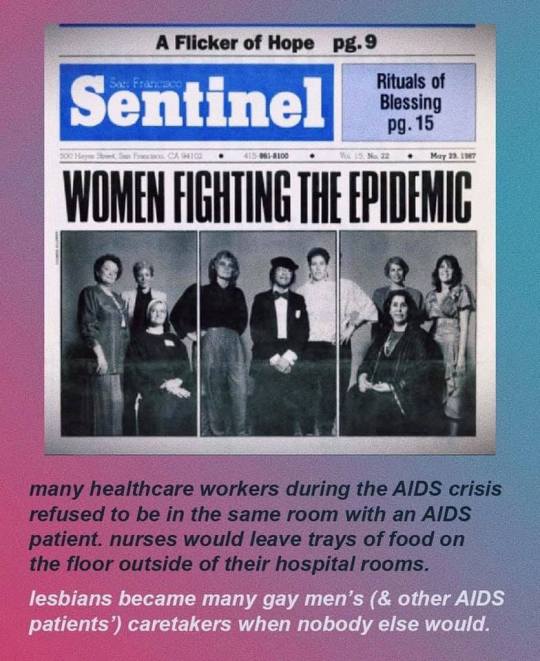

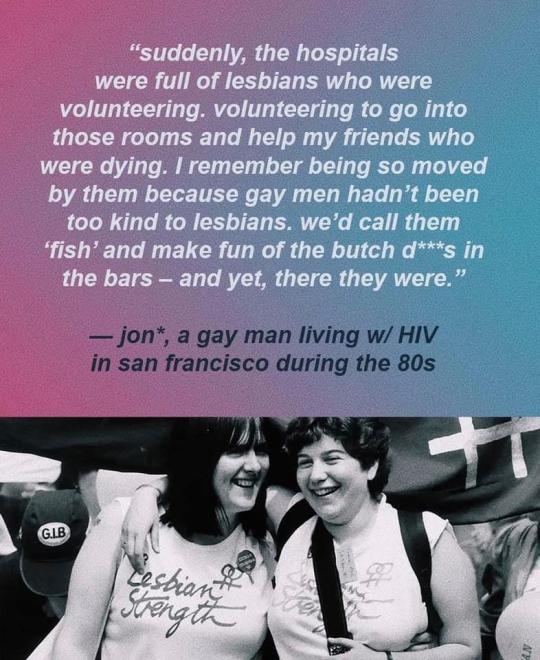

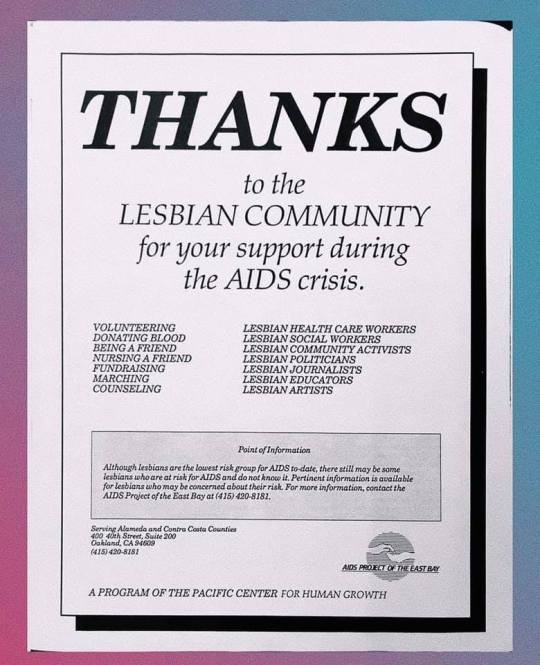
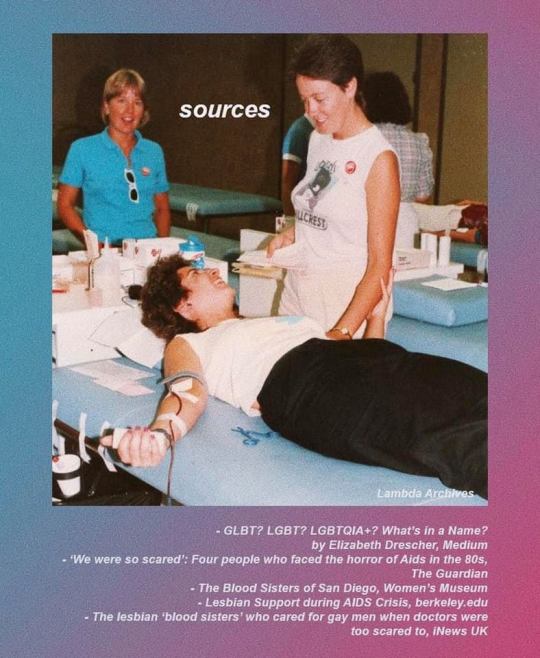
The LGBTQ community has seen controversy regarding acceptance of different groups (bisexual and transgender individuals have sometimes been marginalized by the larger community), but the term LGBT has been a positive symbol of inclusion and reflects the embrace of different identities and that we’re stronger together and need each other. While there are differences, we all face many of the same challenges from broader society.
In the 1960′s, in wider society the meaning of the word gay transitioned from ‘happy’ or ‘carefree’ to predominantly mean ‘homosexual’ as they adopted the word as was used by homosexual men, except that society also used it as an umbrella term that meant anyone who wasn’t cisgender or heterosexual. The wider queer community embraced the word ‘gay’ as a mark of pride.
The modern fight for queer rights is considered to have begun with The Stonewall Riots in 1969 and was called the Gay Liberation Movement and the Gay Rights Movement.
The acronym GLB surfaced around this time to also include Lesbian and Bisexual people who felt “gay” wasn’t inclusive of their identities.
Early in the gay rights movement, gay men were largely the ones running the show and there was a focus on men’s issues. Lesbians were unhappy that gay men dominated the leadership and ignored their needs and the feminist fight. As a result, lesbians tended to focus their attention on the Women’s Rights Movement which was happening at the same time. This dominance by gay men was seen as yet one more example of patriarchy and sexism.
In the 1970′s, sexism and homophobia existed in more virulent forms and those biases against lesbians also made it hard for them to find their voices within women’s liberation movements. Betty Friedan, the founder of the National Organization for Women (NOW), commented that lesbians were a “lavender menace” that threatened the political efficacy of the organization and of feminism and many women felt including lesbians was a detriment.
In the 80s and 90s, a huge portion of gay men were suffering from AIDS while the lesbian community was largely unaffected. Lesbians helped gay men with medical care and were a massive part of the activism surrounding the gay community and AIDS. This willingness to support gay men in their time of need sparked a closer, more supportive relationship between both groups, and the gay community became more receptive to feminist ideals and goals.
Approaching the 1990′s it was clear that GLB referred to sexual identity and wasn’t inclusive of gender identity and T should be added, especially since trans activist have long been at the forefront of the community’s fight for rights and acceptance, from Stonewall onward. Some argued that T should not be added, but many gay, lesbian and bisexual people pointed out that they also transgress established gender norms and therefore the GLB acronym should include gender identities and they pushed to include T in the acronym.
GLBT became LGBT as a way to honor the tremendous work the lesbian community did during the AIDS crisis.
Towards the end of the 1990s and into the 2000s, movements took place to add additional letters to the acronym to recognize Intersex, Asexual, Aromantic, Agender, and others. As the acronym grew to LGBTIQ, LGBTQIA, LGBTQIAA, many complained this was becoming unwieldy and started using a ‘+’ to show LGBT aren’t the only identities in the community and this became more common, whether as LGBT+ or LGBTQ+.
In the 2010′s, the process of reclaiming the word “queer” that began in the 1980′s was largely accomplished. In the 2020′s the LGBTQ+ acronym is used less often as Queer is becoming the more common term to represent the community.
83K notes
·
View notes
Text
THIS DAY IN GAY HISTORY
based on: The White Crane Institute's 'Gay Wisdom', Gay Birthdays, Gay For Today, Famous GLBT, glbt-Gay Encylopedia, Today in Gay History, Wikipedia, and more … January 4



1750 – France Bruno Lenoir and Jean Diot are caught having sex in public for which they are arrested. A year later they were executed. There was general surprise in France at the severity of their sentence. Their execution was the last in France for consensual sodomy.

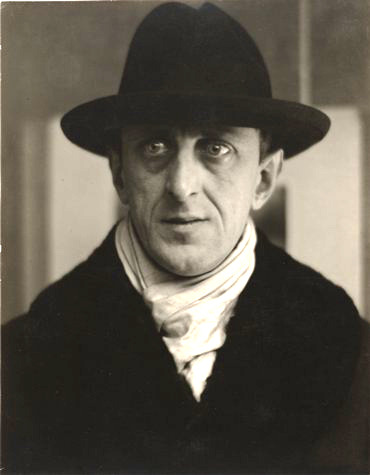
1877 – Marsden Hartley (d.1943) was an American Modernist painter, poet, and essayist. Hartley was born in Lewiston, Maine, where his English parents had settled.
In 1898, at age 22, Hartley moved to New York City to study painting at the New York School of Art. Hartley was a great admirer of Albert Pinkham Ryder and visited his studio in Greenwich Village as often as possible. His friendship with Ryder inspired Hartley to view art as a spiritual quest.
Hartley first traveled to Europe in April 1912, and he became acquainted with Gertude Stein's circle of avante-garde writers and artists in Paris. Stein, along with Hart Crane and Sherwood Anderson, encouraged Hartley to write as well as paint.
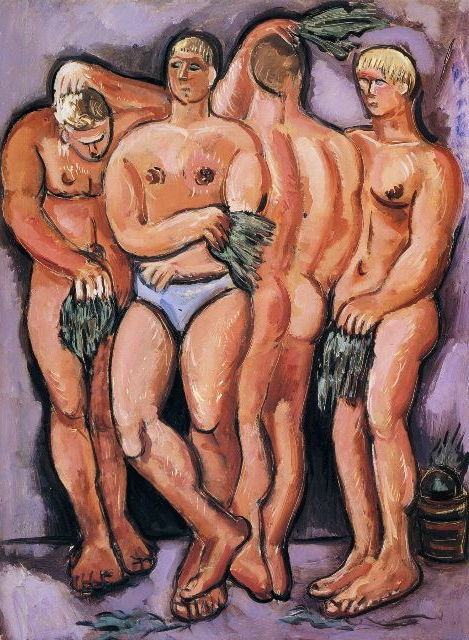
Finnish-Yankee sauna
In 1913, Hartley moved to Berlin, where he continued to paint. Many of Hartley's Berlin paintings were further inspired by the German military pageantry then on display, though his view of this subject changed after the outbreak of World War I, once war was no longer "a romantic but a real reality." The earliest of his Berlin paintings were shown in the landmark 1913 Armory Show in New York.
In Berlin, Hartley developed a close relationship with a Prussian lieutenant, Karl von Freyburg, who was the cousin of Hartley's friend Arnold Ronnebeck. References to Freyburg were a recurring motif in Hartley's work, most notably in Portrait of a German Officer (1914). Freyburg's subsequent death during the war hit Hartley hard, and he afterward idealized their relationship. Many scholars believe Hartley to have been gay, and have interpreted his work regarding Freyburg as embodying his homosexual feelings for him.
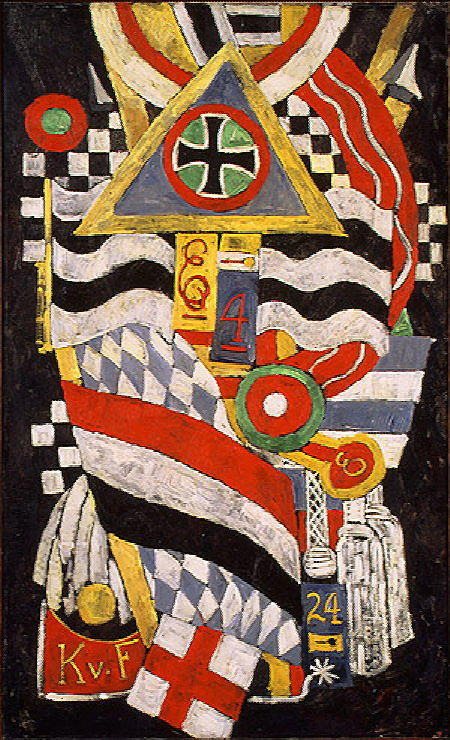
Portrait of a German Soldier
In addition to being considered one of the foremost American painters of the first half of the 20th century, Hartley also wrote poems, essays, and stories.
Cleophas and His Own: A North Atlantic Tragedy is a story based on two periods he spent in 1935 and 1936 with the Mason family in the Lunenburg County, Nova Scotia, fishing community of East Point Island. Hartley, then in his late 50s, found there both an innocent, unrestrained love and the sense of family he had been seeking since his unhappy childhood in Maine. The impact of this experience lasted until his death in 1943 and helped widen the scope of his mature works, which included numerous portrayals of the Masons.
He wrote of the Masons, "Five magnificent chapters out of an amazing, human book, these beautiful human beings, loving, tender, strong, courageous, dutiful, kind, so like the salt of the sea, the grit of the earth, the sheer face of the cliff." In Cleophas and His Own, written in Nova Scotia in the fall of 1936, Hartley expresses his immense grief at the tragic drowning of the Mason sons. The independent filmmaker Michael Maglaras has created a feature film Cleophas and His Own, released in 2005, which uses a personal testament by Hartley as its screenplay.

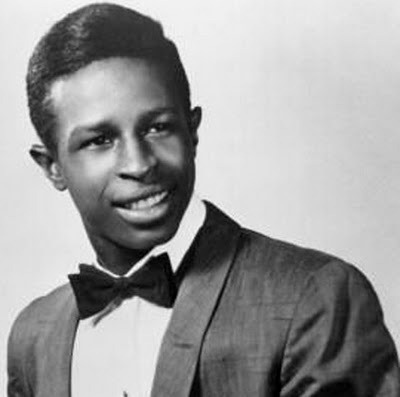
1946 – Arthur Conley aka Lee Roberts (d.2003) was a U.S. soul singer, best known for the 1967 hit "Sweet Soul Music".
Conley was born in McIntosh County, Georgia, U.S., and grew up in Atlanta. He first recorded in 1959 as the lead singer of Arthur & the Corvets. With this group, he released three singles in 1963 and 1964 – "Poor Girl", "I Believe", and "Flossie Mae" – on the Atlanta based record label, National Recording Company.
In 1964, he moved to a new label (Baltimore's Ru-Jac Records) and released "I'm a Lonely Stranger". When Otis Redding heard this, he asked Conley to record a new version, which was released on Redding's own fledgling label Jotis Records, as only its second release. Conley met Redding in 1967. Together they rewrote the Sam Cooke��song "Yeah Man" into "Sweet Soul Music", which, at Redding's insistence, was released on the Atco-distributed label Fame Records, and was recorded at FAME studios in Muscle Shoals, Alabama. It proved to be a massive hit, going to the number two position on the U.S. charts and the Top Ten across much of Europe. "Sweet Soul Music" sold over one million copies, and was awarded a gold disc.
After several years of hits singles in the early 1970s, he relocated to England in 1975, and spent several years in Belgium, settling in Amsterdam (Netherlands) in spring 1977. At the beginning of 1980 he had some major performances as Lee Roberts and the Sweaters in the Ganzenhoef, Paradiso, De Melkweg and the Concertgebouw, and was highly successful. At the end of 1980 he moved to the Dutch village of Ruurlo, legally changing his name to Lee Roberts — his middle name and his mother's maiden name. He promoted new music via his Art-Con Productions company. Amongst the bands he promoted was the heavy metal band Shockwave from The Hague. A live performance on January 8, 1980, featuring Lee Roberts & the Sweaters, was released as an album entitled Soulin' in 1988.
Conley was gay, and several music writers have said that his homosexuality was a bar to greater success in the United States and one of the reasons behind his move to Europe and his eventual name change. In 2014, rock historian Ed Ward wrote, "[Conley] headed to Amsterdam and changed his name to Lee Roberts. Nobody knew 'Lee Roberts,' and at last Conley was able to live in peace with a secret he had hidden – or thought he had – for his entire career: he was gay. But nobody in Holland cared."
Conley died from intestinal cancer in Ruurlo, Netherlands aged 57 in November 2003. He was buried in Vorden.

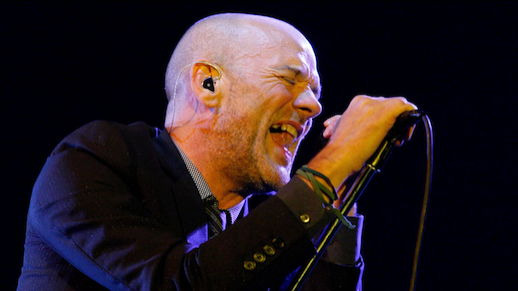
1960 – Michael Stipe has been the lead singer, lyricist, and composer for the successful rock band R.E.M. for over two decades. Among his best-known songs is "Losing My Religion," which rose to number 4 on the United States rock charts in 1991. He has also become involved in film and now has his own production companies.
The child of a career military officer, John Michael Stipe, born in Decatur, Georgia, grew up on bases around the United States and also in Germany, and spent his high school years in Illinois.
Stipe returned to Georgia for college, enrolling as an art student at the University of Georgia in 1978. There he met fellow alternative music fans Peter Buck, Mike Mills, and Bill Berry. Within a year all four had dropped out of college to forge a career as a rock band, R.E.M.
They went on a concert tour and in 1980 put out their first single, "Radio Free Europe." Its success, particularly on college radio stations, won them a recording contract. Their first full-length album, Murmur (1983), was chosen as Album of the Year by Rolling Stone magazine.
Stipe's vigor on stage contributed to the success of R.E.M.'s concerts. He interacted with the audience and charged about with boundless energy. He blasted his often dark and brooding lyrics into the microphone with such force that they were frequently barely intelligible.
In addition to composing and performing, Stipe has also directed several of R.E.M.'s music videos and oversees the creation of their album covers.
By 2004 the band had recorded nearly twenty albums with collective sales of almost fifty million copies worldwide, making it one of the most successful in the history of rock music.
With the success of the albums Out of Time (1991) and Automatic for the People (1992), R.E.M. became mainstream music stars. Around 1992, rumors that Stipe had contracted HIV began to circulate. According to Stipe, he did not start the rumor and he does not know who did.
Not that I can tell. I wore a hat that said 'White House Stop AIDS'. I'm skinny. I've always been skinny, except in 1985 when I looked like Marlon Brando, the last time I shaved my head. I was really sick then. Eating potatoes. I think AIDS hysteria would obviously and naturally extend to people who are media figures and anybody of indecipherable or unpronounced sexuality. Anybody who looks gaunt, for whatever reason. Anybody who is associated, for whatever reason - whether it's a hat, or the way I carry myself -as being queer-friendly.
In 1994, with questions still swirling about his sexuality, Stipe described himself as "an equal opportunity lech," and said he did not define himself as gay, straight, or bisexual, but that he was attracted to, and had relationships with, both men and women.
In 1995, he appeared on the cover of Out magazine. Stipe described himself as a "queer artist" in Time in 2001 and revealed that he had been in a relationship with "an amazing man" for three years at that point. Stipe reiterated this in a 2004 interview with Butt magazine. When asked if he ever declares himself as gay, Stipe stated, "I don't. I think there's a line drawn between gay and queer, and for me, queer describes something that's more inclusive of the grey areas."
In 1999, author Douglas A. Martin published a novel, Outline of My Lover, in which the narrator has a six-year romantic relationship with the unnamed lead singer of a successful Athens, Georgia-based, rock band; the book was widely speculated, and later confirmed by its author, to have been a roman à clef based on a real relationship between Martin and Stipe. The two had previously collaborated on two books, both in 1998: The Haiku Year (for which the two had both contributed haikai) and Martin's book of poetry Servicing the Salamander (for which Stipe took the cover photograph).

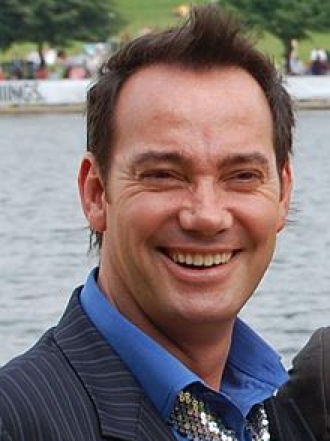
1965 – Craig Revel Horwood is an Australian-British author, dancer, choreographer, conductor, theatre director, and former drag queen in the United Kingdom. He is also a patron of the Royal Osteoporosis Society.
Horwood is best known as a judge on the popular BBC dancing series Strictly Come Dancing, and until 13 November 2021, as he tested positive for COVID-19 and missed the following week's show, had been the only judge to have appeared in every edition since its inception. He is often seen performing ballroom and Latin routines including, in 2019, a performance themed around Hello, Dolly!.
Horwood has a waxwork in Madame Tussauds Blackpool which has been on display since July 2018. On 20 July 2021, Horwood was given an Honorary Doctor of Arts by the University of Winchester at Winchester Cathedral.
He was born in Ballarat, Australia. His father Phil was a former Royal Australian Navy Lieutenant whose alcoholism had "torn their family apart". He started his career as a dancer in Melbourne, then moved to London to take advantage of the greater opportunities available there and to dance competitively. In 1989, he moved to the UK from Australia, and on 20 August 2011, he became a British citizen.
Revel is Horwood's middle name; it is not double barrelled. In his autobiography, Horwood reveals that at the age of 17, he made money by appearing as a drag queen in bars and clubs and that his relationship with an unnamed celebrity was akin to prostitution.
Horwood was married to Jane Horwood from 1990 to 1992. In December 2014, Horwood informed a reporter from OK! magazine that 'I was bisexual for a long time. I flitted between men and women quite a lot between the ages of 17 and 26. My wife Jane left me for another man. Then I fell in love with a bloke. I have been gay ever since.' His former partner Damon Scott had been a runner up on Britain's Got Talent.
Since early 2018, Horwood has been in a relationship with horticulturist Jonathan Myring. In April 2020 Horwood and Myring announced their engagement. The pair, who met on Tinder, became engaged while in Tasmania.
Horwood became a patron of the Royal Osteoporosis Society in 2009. In this, he has found common ground with Camilla, Queen Consort, the Society's Royal patron (whose mother, like his, had bone disease). The two of them danced the cha-cha-cha together, on a school visit to mark National Osteoporosis Day in 2009.
In January 2015, Horwood revealed on ITV's Loose Women that he suffered from anorexia and body dysmorphia as a teenager and young dancer, as a result of trying to make himself look like other young men, and other dancers in particular.The 14th British series of Who Do You Think You Are? featured Horwood's ancestry in the second episode; in this, his family history research took him home to Australia, where he discovered that his family tree traces to Gloucestershire, Lancashire and Essex in England. Horwood found out that he is not the first dancer in his family, and that he is descended from gold prospectors that went bankrupt before becoming rich on finding a 250-ounce (7.1 kg) gold nugget. He also learnt further that his great-great-grandfather, Moses Horwood, who is revealed in the programme to have been a petty criminal from England, was convicted at the Gloucestershire assizes and transported to Van Diemen's Land (Tasmania) in 1841. Criminal records identified by TheGenealogist include a transportation document for Moses Horwood, showing he departed England on 1 December 1841 on board a ship called the John Brewer.

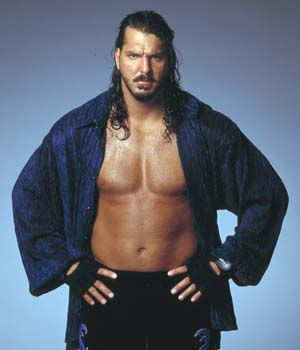
1970 – Christopher Klucsarits, better known as Chris Kanyon (d.2010), US Professional wrestler, best known for his work in World Championship Wrestling and the World Wrestling Federation, under the ring names Kanyon and Mortis.
In 2006, after Kanyon's release from WWE, he began a gimmick in which he was an openly homosexual pro wrestler. This included a publicity stunt wherein he stated that WWE released him from his contract because of his sexuality. Kanyon later told reporters and even stated on a number of radio interviews, that this was just a publicity stunt and he was heterosexual. However, he later retracted these statements and acknowledged that he was in fact homosexual.
Before his death Kanyon was working on a book, Wrestling Reality, with Ryan Clark. The book was released November 1, 2011, and it features Kanyon's struggles as a closeted gay man as a prominent theme.


1984 – Illinois repeals its "lewd fondling or caress" law, more than two decades after repealing its sodomy law.


1997 – A British tabloid accuses Conservative M.P. Jerry Hayes of having an affair in 1991 with a then-18-year-old male. At the time, 18 was under the age of consent.


18 notes
·
View notes
Text
exclus are sometimes the funniest people on earth. "we can't just say that everything that diverges from normative gender and sexuality is queer, queerness is just for people who are l, g, b, and/or t" do you think an angel came down from on high in the nineties to proclaim that these four non-normative gender and sexuality groups and these four groups only share unique experiences that make them worthy of coalition? do you think there was no fuss at all as widely used terms moved from gay to gay and lesbian to glbt to lgbt? do you think we're perceiving a divine truth of the universe by referring to gay men and gay women with separate community terms while bi men and bi women share the same letter of the acronym? do you think queer never meant something more narrow and that even your idea of it covering all lgbts is new to some people? why are you interested in using it at all if you don't like it as a broad umbrella term? like my good bitch whadda hell else do you call people who diverge from normative gender and sexuality in not easily classifiable ways
203 notes
·
View notes
Text

Approximately 2.4 million people 65+ in the U.S. identify as lesbian, gay, bisexual or transgender (LGBT). These individuals, sometimes referred to as GenSilent or the Silent Generation, face unique challenges as they age, particularly when it comes to long-term care and healthcare needs.
LGBTQ seniors often experience discrimination, financial constraints, and a lack of family support as they navigate the aging process. These factors can contribute to feelings of isolation and invisibility within the community.
Groups for LGBTQ older adults, such as www.sageusa.org, are dedicated to addressing these challenges. These programs offer connection, resources, and support to older LGBTQ individuals, helping them forge chosen families and create a sense of belonging.
SAGE (Services & Advocacy for GLBT Elders) provides a wide range of services, including social activities, support groups, healthcare assistance, and advocacy efforts. These resources are designed to empower LGBTQ seniors and improve their quality of life as they age.
By participating in 'Rainbow Seniors' programs like those offered by SAGE, LGBTQ older adults can find a sense of community, access vital resources, and combat the challenges they face as they grow older. These initiatives are essential in ensuring that all individuals, regardless of sexual orientation or gender identity, can age with dignity and support.
#rainbow#lgbtq community#lgbt pride#gay pride#queer community#queer pride#trans community#gay community#trans pride#asexual#pansexual#senior care#seniorhealth#senior living#senior assistance
12 notes
·
View notes
Text
The history of the acronym ‘LGBTQIA+’
The acronym ‘LGBTQIA+’ is used to describe those identifying outside of the gender and sexuality norms. The acronym stands for ‘Lesbian, Gay, Bisexual, Transgender, Queer, Intersex, Asexual/Aromantic, plus’ each of which is a separate identity within the community. But how did this acronym come to be? And how can an acronym be so defining of a cause?
The term ‘homosexual’ had gained a negative connotation in the United states of America, even now it is only used in specific circumstances. The word ‘Gay’ then filled the linguistic gap and gained popularity in the 1970s, as it did not refer explicitly to sexual activity. As time went on, the word ‘Lesbian’ also became more widely known. However, disputes over what the main political aim should be; gay rights or feminism, led to a large number of lesbians branching off. This created other, smaller, social groups; one such example being the ‘Daughters of Bilitis’ who were the first lesbian civil rights activists. They eventually disbanded due to the idea that ‘butches’ and ‘femmes’ were heteronormative and patriarchal.
In the late 1970s or early 1980s, there was a push for bisexuality and transgender inclusion. After the relief felt post the stonewall riots, there was less acceptance of bisexuality leading to the misguided belief of bisexuals being men or women too scared to come out as gay. Transphobia was also common with the idea that these people were simply upholding stereotypes and traditional norms. These beliefs have been carried forth by parts of the community even to modern day, with the idea that ‘Transgender’ should be removed from the acronym.
Around 1988, the acronym ‘LGBT’ had solidified as a term used for the queer community throughout the United States. Since then the acronym has evolved and adapted to be more inclusive of an increasing number of marginalised groups, each adaption carries controversy with it.
The addition of the letter ‘Q’ includes ‘queer’ or ‘questioning’ people into the community. The word ‘Queer’ was often used as an insult and has since been reclaimed by the community. This has led to the development of ‘LGBTQ’ and ‘LGBTQQ’, however many believe that the word ‘queer’ should not be associated with the community and this argument has carried over to this day.
Around the same time, ‘GLBT’ came into existence– this was fundamentally the same, but had ‘Gay’ in front of ‘Lesbian’. The order in which the letters appeared was not standardised in any way which led to international discrepancies between the queer communities, Spain uses LGTB due to their specific preferences.
Other sexualities and gender identifications were recognised under the label of either bisexual or transgender. This is when the use of ‘LGBT+’ began gaining popularity since it meant ‘lesbian, gay, bisexual, transgender, and all other related identities’, others began using a letter like ‘U’ for unknowing, or ‘C’ for curious. There was a pull in many directions with a call for the addition of an ‘H’ for ‘HIV infected person’, a ‘P’ for those in polyamorous relationships, and an ‘O’ for ‘other'.
In 1990, the community and activists began to take in different cultures’ approaches to gender. ‘TS’ or ‘2S’ was used to represent ‘Two Spirit’ people, these are people indigenous to America who use to describe people fulfilling a traditional third gender. In India, ‘LGBTIH’ is sometimes used to include the third gender of ‘Hijra’ and related identities.
At this point, it becomes difficult to pinpoint when exactly the acronym evolved as it was happening through speech alone. Sometime during the early 2010s, the addition of ‘Intersex’ was controversial as many believed that it should fall under the ‘transgender’ label. Intersex people, too, were against the addition as they believed it impeded the progress being made on the rights of intersex people. Julius Kaggawa of the SIPD Uganda wrote that while the queer community ‘offers us a place of relative safety, it is also oblivious to our specific needs’. Emi Koyama has written that the LGBT community could fail to recognise intersex-specific struggles.
In roughly 2015, aromanticism and asexuality became more accepted and understood and joined the community and therefore the acronym. The ‘A’ in ‘LGBTQIA+’ stands for ‘Asexuality’, ‘Aromanticism’, ‘A-spec’, and ‘Agender’, as well as the related communities. People outside the community have claimed that the ‘A’ stood for ‘Ally’, which was met with immediate contradiction as it was erasure of part of the queer community.
The acronym is still debated to this day as many use a shorter version; ‘LGBTQ+’ and others argue that it is queer erasure. People still call for the removal of transgender as they believe the community should be focused on sexuality, and there is still bisexual and asexual erasure by a large party within the community. However, ‘LGBTQIA+’ is recognised as the full acronym to describe the queer community.
Sources: ‘The Handbook of Lesbian, Gay, Bisexual, and Transgender Public Health: A Practitioner's Guide to Service’ by Michael D. Shankle, ‘Sipdug.org’, ‘The Transfeminist Manifesto’ by Emi Koyama, ‘From LGBT to LGBTQIA+: The evolving recognition of identity’ by Erin Blakemore.
6 notes
·
View notes
Text
Assuming that your question is a serious one, and treating you with far more respect than you seem to be treating everyone else in this thread:
The difference between transsexual and transgender is similar to the difference between, say... "colored" and "Black." These are two descriptive terms which mean basically the same thing. They come from different eras, and the older term was previously considered correct or polite but is now considered old-fashioned and possibly borderline offensive, depending on context. Some people, especially older people, may use transsexual or colored to refer to themself, and if they're using it to refer to themself, it's rude to correct them. However, especially if you're not in the group in question, it's best to use the more recent term, as it is what's polite to use for groups of people.
As far as LGBTQ+ vs gay and queer, "gay" hasn't truly been an umbrella term since the 90s when we went from GLBT to LGBT, queer is an umbrella term but primarily used within the community, and LGBTQ+ is considered most universally polite for use by people who aren't in our community.
Yes, there are more issues than these, but not surprisingly, the people who are affected by them might talk about them, so I'm not really sure what the point of you saying that was or what you mean by "MAGA certified." So. Okay? I'm still gonna talk about stuff that matters to me on my Tumblr. You don't have to look. :)
im so tired so here's a recap of what trump did today summarized and probably incomplete because we are in super hell:
End birthright citizenship (a.k.a the 14th amendment)
Remove the legal existence of non-binary people
Withdraw from the world health organization
pardon jan 6 people
9K notes
·
View notes
Text
The Proud "Damned Lesbian," Roberta Achtenberg

Although Roberta Achtenberg is deeply entrenched as a fairly niche political figure, she has had a tremendous impact on the way we are educated about the LGBTQ+ Community and the way they are treated from court rooms to the Senate floor. I personally don't believe that there can be a discussion about inclusion within American politics without referencing Achtenberg's reception as a Assistant Secretary of Housing and Urban Development nominee.
When Roberta was 27 and going through law school, at the University of Utah, she found herself attracted to a woman. Although she was too scared to discuss these feelings at the time, she researched homosexuality and what it meant to be a lesbian. After reuniting with her husband, they amicably divorced, and Roberta decided to come out exclusively to her family, fearing that revealing her sexuality would jeopardize her career as a lawyer and educator. However, her research exposed the disadvantages at which the LGBTQ+ community were often placed under within the law and issues such as; adoption, privacy rights, marriage, housing, and employment. In 2011, she noted "The fact that sodomy laws existed, and we were therefore criminals; and because we were criminals we were judged mentally deficient and because we were mentally deficient we were expendable... [meaning] we could be fired from our jobs or we could have custody of our children taken away" (Achtenberg, Youtube, 13:42-14:28). At the time, legal and societal prejudice made them vulnerable to losing basic human rights if they were to express their sexuality. These issues inspired her to co-found the National Center for Lesbian Rights in 1977, as well as join the National Lawyers Guild in 1978 and begin working within its Anti-Sexism Committee, which was tasked with creating a manual to help attorneys represent their LGBTQ+ clients, how to address their First Amendment issues, etc. This work resulted in her editing of "Sexual Orientation and the Law" (1985).

As she made her way through different positions, in 1993, she was appointed Assistant Secretary for the Office of Fair Housing and Equal Opportunity by President Bill Clinton, making her the first openly LGBTQ person to be appointed and confirmed to a position within a cabinet office. However, this was no easy feat. Conservative groups and Senators, notably Senator Jesse Helms, lobbied against her. In fact, Senator Helms pledged to stall Achtenberg's nomination "for weeks and weeks and weeks" (Helms, UPI), using her sexuality as a central point of attack. In a particularly harsh statement to Times, he referred to her as a "damn lesbian" and an "intolerant radical," framing her nomination as a threat to the future electability of Achtenberg's supportive Senate members. Moreover, the Christian Action Network circulated a video of Achtenberg and her partner riding in a Gay Pride parade in 1992. Helms saw this as further evidence that this was an "insane assault on family values" and chastised her for "demanding that society accept as normal, a lifestyle that most of the world's major religions consider immoral and which the average American voter instinctively finds repulsive" (Helms, GLBT). These actions and statements reaffirmed an issue we continue to struggle with today--the separation of church and state. While some view LGPTQ+ rights as a matter of moral or religious conviction, Achtenberg's appointment underscored the importance of ensuring that public policy and government positions remain free from religious interference. Achtenberg also recalled in 2011 how she was confronted about her position on housing discrimination against gay people and whether or not she wanted to emplace protections. To which she denied, later stating, "I was so scared I wouldn't get confirmed... in 1993 I could not have imagined the temerity of asserting such a position" (24:10-24:47). Despite this she still managed to receive a vote of 58-31 affirming her position within Clinton's cabinet. One of her actions integrated the previously all-white town of Vidor, Texas creating opposition from the Ku Klux Klan. However, her role in this position, despite the national attention, gave the opportunity for gay individuals around the country to find hope in her success. Achtenberg herself stated "The ability to be in public life has been enormously positive to our movement, to our people, and being able to contribute has been very gratifying" (Achtenberg, GLBT).
To speak on her more recent activity and ideology, she gave a speech at Harvard in 2011 detailing how she believes "Old-time warriors like myself, it's time for us to stand down. Not because we're too old, or too tired, or too cynical, but because our skills are not the skills that are needed today to help the movement take the next step"(Achtenberg, Youtube, 11:35-12:20). This sentiment echoes a broader concern in today's political landscape, in which many older politicians refuse to step aside, clinging to their positions of power even as newer generations push for fresh perspectives and leadership. Achtenberg believes that in order to understand why we internalize homophobia and to do something about this, we must look to the next generation. Otherwise, the work of the LGBTQ+ movement will fail to be important and complex. It isn't so much about legalistic thinking or equal rights anymore, but rather a "cultural transformation... of souls, hearts, and minds" (Achtenberg, Youtube, 35:01-35:20). We have to learn to dress the antipathy that pervades the way our culture treats LGBTQ+ people.
Roberta Achtenberg's work, determination, and family life with her partner and son ultimately helped to broaden the definition of family within American culture.

Works Cited
https://www.youtube.com/watch?v=A_e1RgSb4DM&list=PL1dGNrB33lS0vqNa7glklNwikwevRYbyl&index=1
http://www.glbtqarchive.com/ssh/achtenberg_r_S.pdf
https://www.upi.com/Archives/1993/05/06/Helms-vows-to-block-open-lesbians-nomination/9012736660800/
https://kids.kiddle.co/Roberta_Achtenberg
0 notes
Text
so bloody draining
Twenty days ago I had to give my mother a refresher class in trans vocabulary and a (throw GLBT in if you want) grammar lesson since she was trying too hard to show whether they talked about an individual person or a group.
Today I had to throw a rerun of the grammar lesson her way, super, duper, annoying as it was for both of us to be involved in. She was so annoyed she semi-snapped, failing to raise her voice to indicate full-strength anger but being emphatic her lips were zipped and she'd never make a mistake again.
I'd obviously be very happy to believe that assertion if I could. Sadly I'm beyond aware it probably won't be realized since I've had to give my mother many a gentle reminder that they can serve like vous en français; no matter whether you're demonstrating dramatic respect to an individual or you're talking about a group, you'll always affix -ez to the stem of the verb. No matter whether an individual or a group is being referred to in English you won't make any changes to the verb at all; it simply is as it is.
As it is, I'm hoping and praying I won't have to rehash anything with her for God-willing multiple months. Delivering two classes in under three weeks sure didn't foster any joy chez moi, thank you, necessary as it obviously was since, excuse me, everything and everyone needs to be respected (as?) completely (as they can?)
0 notes
Text
LGBTQ Community | LGBTQ Fundraisers | What is LGBTQ | LGBTQ fundraiser
What is LGBT and LGBTQ?
LGBT is a short form for lesbian, gay, bisexual, and transgender. It might also additionally refer to everyone who is non-heterosexual or non-cisgender, rather than completely to those who are lesbian, gay, bisexual, or transgender. A famous variant, LGBTQ, provides the letter Q for individuals who discover as queer or are questioning their sexual or gender identity to understand this inclusion.
What is LGBTQ Community?
The LGBT community (also referred to as the LGBTQ+ community, GLBT community, or the gay community) is also represented grouping of LGBT organisations and subcultures, united by a common lifestyle and social movements. These communities typically celebrate pride, diversity, individuality, and sexuality.
LGBT members see LGBT community-building as retribution to heterosexism, homophobia, biphobia, transphobia, sexualism, and conformist pressures present in the current society. Not all lesbian, gay, bisexual, or transgender people consider themselves part of the LGBT community.
0 notes
Text
This is not factually correct. The highest risk group for HIV infections and developing AIDS has historically been (and still is today) men who have sex with men. This is the medical term because not all MSM identify as homosexual, gay, or admit to any same-sex attraction. Lesbians (and straight women) do get infected with HIV, but not at increased risk. Whether the acronym "used to be" GLBT and was switched to LGBT, I can't say for sure that this didn't happen. But also, I can't find any proof that it did happen. The use of the word "gay" to connote homosexuality started in the 20th century. There's acronyms from this time: the Gay Liberation Front, and Gay Activist Alliance, and Lavendar Menace, but the acronym LGBT seems to be a more recent invention. I can't find references to the "GLBT" except on unsourced essay-form websites.
I'm not saying that it's false, but putting some unsourced tweets and calling it history is a little too "first brick at Stonewall" for me to be comfortable. Absolutely learn the history, but don't be credulous about it.
I will say that the early days of the HIV epidemic had many heroes, women who visited the dying men, who baked them pot brownies and went to jail for it, and who claimed their bodies and buried them on family land. Some of these women were indeed lesbians. Some gay men credited lesbian feminists with giving them the tools to organize, advocate, and eventually change society into recognizing and treating HIV.

Learn the history.
1K notes
·
View notes
Note
Hey, so I founded this blog a while ago and wanted to ask a question, pls feel free to just directionate me to another link or anything, but how do I start searching for queer history on some place? Like, what do I start looking for and where am I supposed to look at those stuff?
thank you very much :)
This is a great question! For me, if I am looking into a specific place it sorta works like a flow chart, because some places are harder to find information about than others. I like to think of history like this massive tapestry, and queer history is about finding a common thread. That can be a singular person, a group of people, actual queer organizations, or language, no matter what you’re looking for, I hope the steps below will be useful.
I am going to start by assuming you went through our list of countries, and didn’t find the area in question.
So, we start easy, go to your favourite search engine and let’s get a Wikipedia overview of the area, so “[Area] LGBT rights Wikipedia” is a good starting point. This won’t give you a complete understanding but is great for timelines and you might get lucky and find a name mentioned you can look more into. Ideally, you find an interesting thread on the Wikipedia page, and then you look into that with your favourite search engine to see if there is something there. If there is, the next step for me would be searching with Google Scholar and finding books on my own shelves/local library that might include a reference to the thing I am searching for.
It is more than likely you won’t find anything on the Wikipedia page though unfortunately, so your next step would still be Google Scholar, searching “[Area] queer history”. It seems simple, but a lot of the time it doesn’t turn up much that is relevant. Next search term “[Area] “queer” history”, the extra quotation marks are included in the search to weed out any articles that don’t include discussions of queerness, but if you found the results didn’t include enough from the area, you may also want to put the quotation marks around that.
If nothing comes up, scrap “history” from the search term, and look through. You can also switch out “queer” with LGBT, GLBT, gay, LGBT+, or any individual identity you are interested in. I usually at least try and go through the acronym and use each identity as an individual search term before giving up.
In general, you’ll have to go through a couple of pages before finding anything, and a lot of the time it is behind a paywall. That is where our Patreon/tools like sci-hub come in handy (I found the queer history book of my dreams recently and I still have yet to find a way to access it, I have requested it from my library but even they said it was too expensive).
Let’s go on assuming you can’t get behind the paywalls that exist though, looking through the abstracts for names or references will help narrow down your search. Also, feel free to look outside of history, queer themes in literature from the area can lead you to some interesting stuff generally. If there is nothing there, swap out queer for gender, and you might be able to get something from that.
If through all this, you still haven’t found a name or thread to follow, that is still okay! There are some trusty books that have helped me out in these situations, The Construction of Homosexuality, by David Greenberg is far from perfect, but it has been an incredible resource in moments like this, I am also reading The Pink Line by Mark Gevisser which looks as if it will be added to my arsenal. Let’s assume you can’t find a way to access either of these though, next step will be looking at the catalogues of local libraries, both public and university if you can swing it.
There usually is a sexuality section, under Health and Wellness, and you might get lucky and find a book or resource pertaining to the area you are looking into there. Let’s say you don’t though, next step is looking at the general history of this area, which means going in from step one, and removing the term “queer” or “LGBT”. Look out for things like people who remained unmarried, and try to find out why in their own words, relationships with people of the same gender that are noted as particularly close are also worth looking into, it really depends on the identity. There are going to be a lot of misses, but I am assuming a lot of dedication here, and you will get a hit eventually. It may take a while though, so have patience.
If you find a name, the first easy step is searching “[Name] [Identity]” just to see if anyone else has confirmed or denied this possibility.
If you don’t find a single name, start looking at more in-depth biographies and/or autobiographies from people in the area's history, sometimes it is through a friend of a friend that you find the person you’re looking for.
Let’s say there is still nothing, look into queer orgs in the area that are still currently running, and if there aren’t any, look for some that might be allies. I don’t know your situation, but please take precautions if you think reaching out might in any way endanger you or the organization in question. Email them, just ask if they have any resources for queerness in general, and if it is safe/they have anything, you can start asking questions about queer history in the area specifically. You might get lucky and find an archive to look through!
Let’s say you don’t though, take a step back and broaden your search to a wider area and try to narrow from there, which might mean going from a city to a province, or a province to a country, or a country to a continent.
As someone who has taken all of these steps before, let me say, if you find the answers you’re looking for on the first to fifth steps, that is a privilege. I am happy for you, so many of the people I talk about spent their lives working for you to have that privilege, so take advantage of it when you can, but please remember it is not a privilege that every queer person shares.
If none of this works, come back to me, and I will do my level best to find something for you.
601 notes
·
View notes
Text
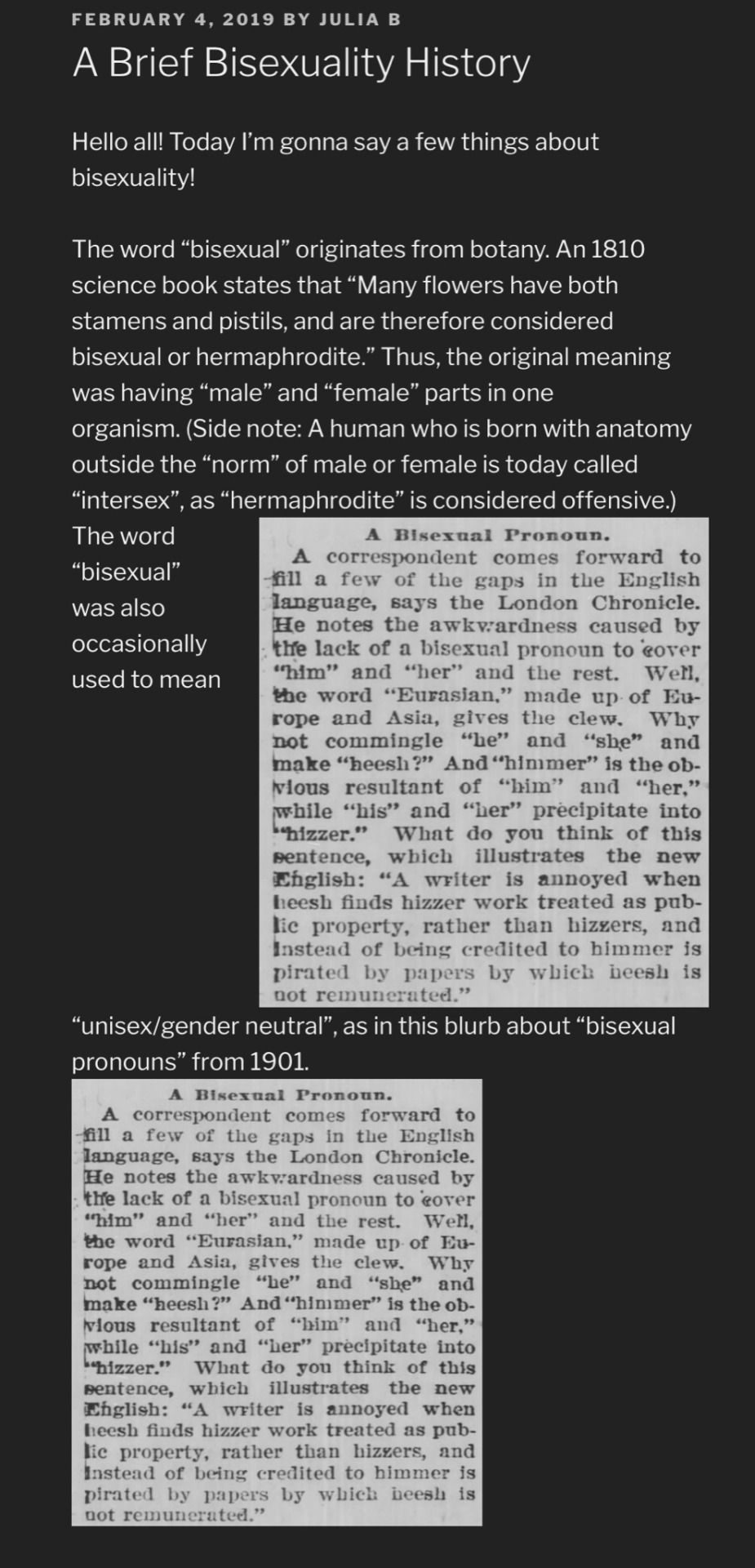
So, how did it come to be a label for a sexual orientation? Well, in the early 1900s, a popular view of same-sex desire was “inversion theory”. This theory, put forth by straight male psychologists, proposed that gay men and lesbian women were sexual “inverts”: people who appeared physically male or female on the outside, but internally/mentally (or “psychically”) were of the “opposite” anatomical sex.
For people whose desires were not exclusively gay or exclusively straight, the theory said they had “psychical hermaphroditism”, so that their desire for women stemmed from their “male psyche” and their desire for men stemmed from their “female psyche”. Some psychologists even stated that bisexual desire indicated a person was “immature”, as in not fully developed. Richard von Krafft-Ebing, in his 1894 book Psychopathia Sexualis, wrote several case studies of “Psychical Hermaphroditism”, including the case of “Mrs. M., aged 44”, who “exemplifies the fact that an inverted and a normal sexual instinct may be united in one person, be it man or woman. […] Her sexual feeling would be directed at one time to women, at another to men.” Another case detailed in this text is that of Mr. X, age 28: “With reference to his sexual inclinations, the patient is still uncertain whether he feels more inclination toward the opposite sex or toward his own sex.” These people whose sexual attractions were a “combination” of “normal” (straight) and “inverted” (gay) would later be deemed “bisexual”.
When gay rights movements began later in the 1900s, men who we would today call bisexual were active in gay men’s groups, and women who we would today call bisexual were active in lesbian groups. In many circles of society back then (e.g. within the sexual liberation movement of the 1960s) being exclusively attracted to the same gender was not a requirement to identify as gay/lesbian. Here, “gay” was used as an umbrella term for all non-straight and/or transgender people.
In other circles, if one was not exclusively gay or exclusively straight, they would be ostracized from both straight and gay communities. For example, Al Weininger, the vice president of the Society for Human Rights, the first known gay men’s organization in the United States (est. 1924), was bisexual and married. He had to keep this a secret, as the group denied membership to bisexuals, believing that they would be less committed to the cause.
A bisexual activist, Brenda Howard, is known as the “Mother of Pride” for her work in coordinating the first Pride March in 1970. Another bisexual, Bill Beasley, was the core organizer of the first Los Angeles Gay Pride March in 1972.
In the 60s and 70s, second-wave feminism led to people who expressed attraction to more than one gender being fully ousted from gay and lesbian communities. Many bisexuals were tired of hiding a part of themselves anyway. Thus, by the mid-70s to early 80s, bisexuals had formed their own communities or subgroups. Remnants of this separation (and the prior “fusion” of bisexuals into gay groups) still remain in the names of longstanding LGBT organizations such as:
PFLAG – “Parents and Friends of Lesbians and Gays” (est. 1973)
SAGE – “Senior Action in a Gay Environment” (est. 1979 – now re-acronymed as “Services & Advocacy for GLBT Elders”
GLAAD – “Gay & Lesbian Alliance Against Defamation” (est. 1985)
LAGBAC – “Lesbian and Gay Bar Association of Chicago” (est 1987)
GLSEN – “Gay, Lesbian & Straight Education Network” (est. 1990)
COLAGE – “Children of Lesbians and Gays Everywhere” (est. 1990)
During the AIDS crisis of the 1980s, bisexual men were vilified as a collective scapegoat for the spread of “the gay disease” to straight people. BiPOL, a bisexual political action group, was formed in 1983 to combat this negative stereotype and to advocate for bisexuals. In 1984, BiPOL sponsored the first bisexual rights rally, outside the Democratic National Convention in San Francisco.
On December 5 1998, the Bisexual Pride flag designed by Michael Page was unveiled, and in 1999, the first Celebrate Bisexuality Day (September 23) was organized by Michael Page, Gigi Raven Wilbur, and Wendy Curry.
As you can see, it has been a long long road from the misguided “Bisexuals are psychical hermaphrodites” to the correct “Bisexuals are people who have attraction to more than one gender”!
For decades now, bisexuals have been fighting stereotypes and misinformation, such as “Bisexuals are slutty/greedy/more likely to cheat on me”, or “Bisexuality is a phase/They’re gays in denial/They’re straights faking it for attention”, or “Bisexuality reinforces the gender binary/ Bisexuals are limited to two genders/Bisexuals won’t date trans or nonbinary people”. In fact, none of these are true.
I will close with a quote from the 1990 Bisexual Manifesto.
We are tired of being analyzed, defined and represented by people other than ourselves, or worse yet, not considered at all. We are frustrated by the imposed isolation and invisibility that comes from being told or expected to choose either a homosexual or heterosexual identity.
Bisexuality is a whole, fluid identity. Do not assume that bisexuality is binary or duogamous in nature: that we have “two” sides or that we must be involved simultaneously with both genders to be fulfilled human beings. In fact, don’t assume that there are only two genders.
Do not mistake our fluidity for confusion, irresponsibility, or an inability to commit. Do not equate promiscuity, infidelity, or unsafe sexual behavior with bisexuality. Those are human traits that cross all sexual orientations. Nothing should be assumed about anyone’s sexuality, including your own.
#bisexual history#queer history#bisexual education#queer education#bisexuality#lgbtq community#bi#lgbtq#support bisexuality#bisexuality is valid#lgbtq pride#bi tumblr#pride#bi pride#bisexual#bisexual community#bisexual flag#bisexual nation#queer nation#bisexual positivity#biphobic gay people#biplusus#biphopia#biphobic#support bisexual people#respect bisexual people#lgbtq history#lgbt history#bisexual pride
240 notes
·
View notes
Text
THIS DAY IN GAY HISTORY
based on: The White Crane Institute's 'Gay Wisdom', Gay Birthdays, Gay For Today, Famous GLBT, glbt-Gay Encylopedia, Today in Gay History, Wikipedia, and more … January 31



1729 – A Prussian baker is executed for fellating another man who later died, according to the court, of "exhaustion."



1797 – Austrian composer Franz Schubert was born (d.1828). He wrote some six hundred Lieder, nine symphonies (including the famous "Unfinished Symphony"), liturgical music, operas and a large body of chamber and solo piano music. He is particularly noted for original melodic and harmonic writing.
While Schubert had a close circle of friends and associates who admired his work (including his teacher Antonio Salieri and the prominent singer Johann Michael Vogl), wider appreciation of his music during his lifetime was limited at best. He was never able to secure adequate permanent employment, and for most of his career he relied on the support of friends and family. Interest in Schubert's work increased dramatically in the decades following his death.
Schubert was significantly influenced by his close-knit group of male friends, known as the Schubert Circle. His relationships with an older school friend Joseph von Spaun, the young poet Johann Mayrhofer, and the wealthy young sensualist Franz von Schober were the most important of his life. He and Schober often lived together for extended periods.
Citing the composer's dissipation, his lack of female love interests, his passionate male friendships and several oblique references in his surviving correspondence, Maynard Solomon has argued that Schubert's primary erotic orientation was homosexual. The immediate reaction on the part of many musicologists and music critics, who often simply refused to consider the evidence, revealed a deep-seated homophobia among many specialists in classical music. But in recent years the notion of a gay Schubert has become if not commonplace, at least much less controversial. Schubert's alleged homosexuality and its effect on his music are subjects of continuing debate among music historians and critics.


1914 – Edward Melcarth (d.1973) was a painter, sculptor, illustrator, lecturer and teacher, born in Louisville, Kentucky, as Edward Epstein Jr. Edward Melcarth who dared to live as an openly homosexual man and not hiding his support for communism did not earn a significant place in modern art’s canonical history for exactly those reasons.
He was active on New York’s burgeoning, post-World War II art scene; his work was shown at the Museum of Modern Art in the 1940s and at Manhattan galleries over a decades-long timespan, and he knew just about everyone, including the multimillionaire art collector and Forbes magazine publisher, Malcolm Forbes; his circle also included many other artists as well as countless, now nameless hustlers, sailors, beach bums, and representatives of working-class “trade” who posed for his pictures and with whom he had sex.

Summer Morning
Melcarth was born Edward Epstein to Jewish parents in Louisville in 1914. After his father died, his mother, whose family discouraged her from becoming an opera singer, remarried a wealthy British aristocrat. Edward, who would reject religion and change his surname to that of an ancient Phoenician god, was educated in London and at Harvard University; later he studied art in Boston with the German-born painter Karl Zerbe.
The gay, Kentucky-born artist Henry Faulkner, the photographer Thomas Painter, and Melcarth lived together in New York for some time during the decades following WWII. They shared friends, artistic interests — and sexual partners, too.
Painter was one of the research subjects who provided testimonials about his own and his homosexual associates’ sexual activities to the pioneering sexologist Alfred Kinsey. His reports were detailed, and from them we learn that Melcarth's appetite for sex was rapacious.
In the late 1960s, Melcarth left New York and settled in Venice, where he focused on making sculpture and died in 1973. At some point during his New York years, he had met Malcolm Forbes, who became a regular collector-patron and, after Melcarth’s death, acquired a large quantity of his works, and has been the source of many expositions of Melcarth's art.


1948 – Paul Jabara (d.1992) was an American actor, singer, and songwriter of Lebanese ancestry.
Paul wrote Donna Summer's "Last Dance" from Thank God It's Friday (1978) and Barbra Streisand's song "The Main Event/Fight" from The Main Event (1979). He cowrote the Weather Girls hit, "It's Raining Men" with Paul Shaffer.
Jabara was in the original cast of the stage musicals Hair and Jesus Christ Superstar. He took over the role of Frank-N-Furter in the Los Angeles Production of The Rocky Horror Show when Tim Curry left the production to film the movie version in England. He appeared in John Schlesinger's 1975 film, "The Day of the Locust", where he sang the production number "Hot Voo-Doo"
In 1979, Jabara won both Grammy Award for Best R&B Song and the Academy Award for Best Original Song for the song performed by Donna Summer, "Last Dance". Jabara's album Paul Jabara & Friends, released in 1983, features guest vocals by a then-20 year old Whitney Houston. It also includes the song "It's Raining Men". That song was later re-recorded several years later by drag supermodel RuPaul and Martha Wash. Wash sang on the original recording as part of the group the Weather Girls.

Jabara co-founded the Red Ribbon Project in 1991, and is credited with conceiving and distributing the first AIDS Red Ribbon.
Paul Jabara died of AIDS in Los Angeles at the age of 44 on September 29, 1992.


1952 – Brad Gooch is an American writer.
Born and raised in Kingston, Pennsylvania, he graduated from Columbia University with a bachelors in 1973 and a doctorate in 1986.
Gooch is currently a Professor of English at William Paterson University in New Jersey. He has lived in New York City since 1971. His 2015 memoir Smash Cut recounts life in 1970s and 1980s New York City, including the time Gooch spent as a fashion model, life with his then-boyfriend filmmaker Howard Brookner, living in the famous Chelsea Hotel and the first decade of the AIDS crisis.
Gooch is married to writer and religious activist Paul Raushenbush; they have one child.


1973 – Portia Lee James DeGeneres, known professionally as Portia de Rossi, is an Australian-American actress, model and philanthropist, known for her roles as lawyer Nelle Porter on the television series Ally McBeal and Lindsay Fünke on the sitcom Arrested Development. She also portrayed Veronica Palmer on the ABC sitcom Better Off Ted and Olivia Lord on Nip/Tuck. She is married to American stand-up comedian, television host and actress Ellen DeGeneres.
De Rossi, born Amanda Lee Rogers in Horsham, Victoria, Australia grew up in Grovedale, a suburb of Geelong, Victoria, and modelled for print and TV commercials as a child. In 1988, at the age of 15, Rogers adopted the name Portia de Rossi, by which she remains best known; in 2005, she explained that she had intended to reinvent herself, using the given name of Portia, a character from William Shakespeare's The Merchant of Venice, and an Italian last name.
De Rossi was married to documentary film-maker Mel Metcalfe from 1996 to 1999, initially part of a plan to get a green card, but she did not go through with it. She said that "it just obviously wasn't right for me". In a 2010 interview on Good Morning America, she explained that as a young actress, she was fearful of being exposed as a lesbian.
From 2000 to 2004, de Rossi dated singer Francesca Gregorini, the daughter of Barbara Bach and the stepdaughter of Ringo Starr. She said that most of her family and Ally McBeal castmates did not know she was a lesbian until tabloid pictures of the couple were published. She declined to publicly discuss the relationship or her sexual orientation at the time.
De Rossi and Gregorini broke up in late 2004 because de Rossi began dating Ellen DeGeneres, whom she met backstage at an awards show. In 2005, she opened up publicly about her sexual orientation in interviews with Details and The Advocate. She became engaged when DeGeneres proposed with a three-carat pink diamond ring. They were married at their Beverly Hills home on 16 August 2008, witnessed by their mothers and 17 other guests. On 6 August 2010, Portia filed a petition to legally change her name to Portia Lee James DeGeneres. The petition was granted on 23 September 2010. She became a US citizen in September 2011.
In 2010, de Rossi published the autobiography Unbearable Lightness which talks about the turmoil that she has experienced in her life, including suffering from anorexia nervosa and bulimia and being misdiagnosed with lupus.


1979 – Daniel Tammet is an English essayist, novelist, poet, translator, and autistic savant. His memoir, Born on a Blue Day (2006), is about his early life with Asperger syndrome and savant syndrome, and was named a "Best Book for Young Adults" in 2008 by the American Library Association's Young Adult Library Services magazine. His second book, Embracing the Wide Sky, was one of France's best-selling books of 2009. His third book, Thinking in Numbers, was published in 2012 by Hodder & Stoughton in the United Kingdom and in 2013 by Little, Brown and Company in the United States and Canada.
In 2016 he published his debut novel, Mishenka, in France and Quebec. His books have been published in over 20 languages. He was elected in 2012 to serve as a fellow of the Royal Society of Arts.
Tammet was born Daniel Paul Corney, the eldest of nine children, and raised in Barking and Dagenham, East London, England. As a young child, he suffered epileptic seizures, which remitted following medical treatment.
He participated twice in the World Memory Championships in London under his birth name, placing 11th in 1999 and 4th in 2000.
He changed his birth name by deed poll because "it didn't fit with the way he saw himself." He took the Estonian surname Tammet, which is related to "oak tree".
At age twenty-five, he was diagnosed with Asperger syndrome by Simon Baron-Cohen of the University of Cambridge Autism Research Centre. He is one of fewer than a hundred "prodigious savants" according to Darold Treffert, the world's leading researcher in the study of savant syndrome.
Tammet holds the European record for memorizing and recounting pi to 22,514 digits in just over five hours. This sponsored charity challenge was held in aid of the National Society for Epilepsy (NSE) on “Pi Day”, March 14, 2004, at the Museum of the History of Science, Oxford, UK.
He was the subject of a documentary film titled Extraordinary People: The Boy with the Incredible Brain, first broadcast on the British television station Channel 4 on 23 May 2005.
He met software engineer Neil Mitchell in 2000. They lived together as domestic partners in Kent, England, where they had a quiet life at home with their cats, preparing meals from their garden. He and Mitchell operated the online e-learning company Optimnem, where they created and published language courses.
Tammet now lives in Paris, France, with his husband Jérôme Tabet, a photographer whom he met while promoting his autobiography. Tammet is openly gay.


2017 – Thousands of gay and bisexual men who were convicted of now-abolished sexual offenses laws in Britain have been posthumously pardoned under a new policing law, the Justice Ministry announces. The law, which received Royal Assent on this day, is named after British WWII codebreaker Alan Turing, who committed suicide following his conviction for gross indecency and was posthumously pardoned by Her Majesty the Queen in 2013. It also makes it possible for living convicted gay men to seek pardons for offenses no longer on the statute book.


11 notes
·
View notes
Text
Elizabeth Hunter says she became suicidal after Bob Jones University administrators grilled the former student about her sexuality for tweeting “happy Pride” and writing a book with lesbian characters. She was fined, sent to anti-gay counseling and removed from her job at the campus TV station. Veronica Penales says she’s told officials at Baylor University, where she is a sophomore, that people leave anti-gay notes on her door, but they don’t investigate. Lucas Wilson said he graduated from Liberty University with “a profound sense of shame” after being encouraged to go to conversion therapy.
The three are among 33 current and past students at federally funded Christian colleges and universities cited in a federal lawsuit filed Monday against the U.S. Department of Education. The suit says the religious exemption the schools are given that allow them to have discriminatory policies is unconstitutional because they receive government funding. The class-action suit, filed by the nonprofit Religious Exemption Accountability Project, references 25 schools across the country.
“The Plaintiffs seek safety and justice for themselves and for the countless sexual and gender minority students whose oppression, fueled by government funding, and unrestrained by government intervention, persists with injurious consequences to mind, body and soul,” reads the suit, filed in U.S. District Court in Oregon. “The Department’s inaction leaves students unprotected from the harms of conversion therapy, expulsion, denial of housing and healthcare, sexual and physical abuse and harassment, as well as the less visible, but no less damaging, consequences of institutionalized shame, fear, anxiety and loneliness.” The suit — intentionally — comes at a sensitive time. The U.S. House recently passed the Equality Act, a sweeping measure that would add gender identity and sexuality to the groups protected under the Civil Rights Act, while significantly weakening exemptions for religious groups and people. While President Biden says he will sign the bill as it is, the Equality Act awaits a vote in the Senate, where it faces an uphill battle.
Religious organizations seeking a compromise measure that would include religious exemptions have been meeting for weeks with gay rights and civil rights groups. The prospect of carve-outs for the hundreds of schools with policies barring LGBTQ behavior or advocacy led to the suit, said Paul Carlos Southwick, director of the Religious Exemption Accountability Project.
“Many mainstream LGBTQ groups aren’t committed to fighting. We want to say: ‘Don’t negotiate us away.’ Don’t bargain away these students, who are really being damaged with taxpayer money,” Southwick said. “I’m worried they will be cut out of the Equality Act protection through negotiations.”Veronica Penales, one of the students involved in the suit, says officials at Baylor University have done nothing about the people who have left anti-gay notes on her door. (Kevin Truong)
An Education Department spokeswoman noted in an email that Biden signed an executive order just after taking office saying his administration “guaranteed an education environment free from discrimination” for LGBTQ people. The order, however, didn’t address the issue of religious rights and exemptions. The statement Monday said the department considers religious exemptions valid and legal for a certain subset of schools: “educational institutions controlled by religious organizations.” It’s not clear how many conservative Christian schools today fall into that category. A spokeswoman for Baylor declined to comment, saying the school hadn’t seen the suit. Lori Fogleman directed The Post to a 2019 statement from the school’s president noting that its code of conduct — typical of the schools referenced in the suit — bars sexual relations between people outside heterosexual marriage. The statement also said that the school is “in compliance” with the law and that students aren’t disciplined or expelled for “same-sex attraction.” It says the school’s counselors “do not practice or condone conversion or reparative therapy.” Baylor’s LGBTQ group is not allowed official status.
“With this said, we understand that we must do more to demonstrate love and support for our students who identify as LGBTQ,” President Linda A. Livingstone wrote.
A spokesman for Bob Jones said the school hadn’t seen the lawsuit and therefore wouldn’t comment on it. However, President Steve Pettit earlier this month wrote that the Equality Act “would enforce a single government-sanctioned ideology and punish those who do not conform.” Spokesman Randy Page wrote to The Post that the school “believes that all persons have inherent dignity and should thus be treated with kindness and respect. In addition, the Supreme Court has twice stated that government must respect the belief that marriage is between one man and one woman.” A request for comment from Liberty wasn’t immediately returned. The suit injects dozens of personal experiences into a debate about religious liberty and LGBTQ rights that’s often been more legalistic. It seeks to put individual faces and names on an aspect of Equality Act debate that doesn’t get much attention — students at conservative Christian schools.
It cites a gay ICU nurse who said he was admitted to a graduate nursing program, sold his car, left his old job and was days away from starting school when he was allegedly told his admission was rescinded because he is engaged to a man. “A grown man with a successful career, loving family and fiancé, [he] went into his closet, curled up in a ball and cried,” the suit says. It cites a queer student who recalls being regularly called slurs on a Christian school’s campus and is afraid to walk at night alone. According to the suit, that person is often subject to disciplinary action for wearing feminine-style clothing. Another said he was fired as a resident assistant and then kicked out of school for being openly bisexual. The suit argues that the exemptions violate the Constitution’s equal protection clauses by singling out LGBTQ students as a “socially despised group for legal disfavor.” It also argues the exemptions violate the Establishment Clause — the part of the First Amendment barring the government from favoring religion, or a religion — because the Education Department asks schools that want an exemption questions about their religious practices and affiliations. This is, the suit says, unconstitutional government meddling and judging about religion.
According to the Religious Exemptions project, there are approximately 600 four-year, degree-granting nonprofit Christian colleges in the United States, one-third of which have policies against LGBTQ students in their student code of conduct policies. The project, using a U.S. Treasury Department website that calculates federal aid says the approximately 200 religious schools with discriminatory policies receive $4.2 billion. The site, called Data Lab, said as of 2018, the last year for which data is available, Baylor received $142 million and Liberty $723 million. Hunter, who graduated from Bob Jones in 2019 and is now a news producer in South Carolina, said she was careful never to publicly say she thought she might be a lesbian and felt she was only trying to subtly raise questions with her tweets. A sexual assault survivor who grew up in foster care and then was adopted by a fundamentalist family, she said that before her punishments, on campus, “I was considered a really nice person.”
“I wasn’t advocating gay people should have rights. I knew biblically the school would disagree. I wanted to affirm GLBT rights without opposing biblical values. All I was saying online is: ‘I’m trying to live.’ ”
#Bob Jones University#LGBTQBJU#Elizabeth Faith Hunter#Class of 2019#BJUisNOTSafe#Washington Post#Steve Pettit#Randy Page#Equality Act
32 notes
·
View notes
Note
Hi! I'm running a server for a nonprofit that helps trans youth and working on explaining sexualities and gender identities through research and I thought I'd ask a bi person/someone who seems to strive for bi advocacy about how to define bisexuality and what the difference is between bisexuality and pansexuality. I totally understand if you can't answer this by the way, just thought I'd ask ^^ I also apologize for the spam, I'm reblogging stuff I need to research later
Good to meet you! This will be a long post, please be prepared!
What is the Difference Between Bisexuality and Pansexuality?
First, we need to talk about Bisexuality and it’s history.
Bisexuality is an identity that is rooted in reclamation. Bisexuality was coined by the same man who coined homosexuality and sadism in Psychopathia Sexualis, by which bisexuality was described as a sexual deviancy and dysfunction. Someone “suffering from bisexual tendencies” was a person who was intimate with both men and women, those genders being what the standard was in 1886.
Bisexual has also referred to androgynous and intersex characteristics, as well as a way to describe co-ed spaces. In fact, even today on the Purdue OWL page for Queer Theory, Bisexual’s definition is that of androgyny instead of an identity.
Bisexuality, then, has had over 100 years of definitions and meanings and connotations. As early as the 1950s, bisexual was reclaimed for use as an identity (up until this point, Ambisexual was often used, though there were references to bisexuality as well). That’s also over 70 years of erasure, misunderstanding, and biphobia. Historically, bisexuals have been at the forefront of the gay rights movements, but were often banned from joining groups. Even at the peak of bisexual activism in the 1970s, bisexuals struggled to find acceptance and visibility.
Since the 1970s, and even in Alfred Kinsey’s famous 1948/1953 studies that developed the Kinsey Scale, bisexuality has been described as either not having a preference in one gender or as an attraction to all genders. And of course, bisexual activists have also defined it as such.
We are in a day and age in which non-binary people have more visibility than ever. It has introduced to us the concepts of nombinary sexual identities, which range from non-binary exclusive terms like trixic, to non-binary lesbians. It depends on the individual, and their alignment (or lack thereof) to decide where they fall, of course. But the existence of non-binary people makes room in pre-existing identities for additional definitions.
Bisexual has never really meant “two genders” or “men and women”. Like non-binary, bisexual describes tens of thousands of experiences and attractions. It describes preferences, and it simultaneously describes lack of preferences. Many activists will tell you that bisexuality isn’t binary, which refers both to it not being a system of “two” and also not being “men and women”. So even if you define bisexuality as “attraction to any two genders” you will be speaking over bisexuals of years past, and present.
I am bisexual, and non-binary. I’m attracted to all genders, and so are most bisexuals.
Bisexuality refers to being attracted to all or (most) genders, in my opinion. I often say it exactly like that to others. Because I do meet bisexuals who have fallen under the “most genders”. Don’t use “two” in your definition at all (even for “two or more”), or “more than one”. Especially because non-binary lesbians and gay and straight non-binary people exist!
Now, on to pansexuality! This is also a shortened version because tumblr still limits lines on posts and I don’t wanna push it.
Pansexual is also a reclaimed term. It’s been through a lot as well. Pansexual had many meanings, including a state of genderlessness (as in, no assigned sex) as referred to in The Dialectic of Sex: The Case For Feminist Revolution by Shulamith Firestone. It was also used to refer to androgyny, mostly with regards to David Bowie and Mick Jagger (this is best noted in this Atlantic article for Mick). Pansexuality has also been defined as a sort of unhinged promiscuousness, as well as “the eroticization of all social relations”. The term “pansexual pervert” comes up in many, many writing pieces predating 1990 which is just terrible.
One of the earliest “other” versions of pansexual to be used was by Alice Cooper in a 1974 interview. To him, pansexual was being down for anything with anyone, across age, race, and gender (x).
In 2005, a GLBT ally guide was printed defining Pansexuality as a “term of choice for people who do not self-identify as bisexual, finding themselves attracted to people across a spectrum of genders”. Interestingly, bisexual was defined as an attraction to “both” males and females. You’ll notice that the definitions for gay men and lesbians only use “men” or “women” and don’t use biological terms. The glossary begins at page 63 (x). One could argue that this is because of an intersexist belief that regardless of your gender, you’re either male or female, hence bisexuality being described those terms as well as “both”, which implies there are only two of something.
Pansexuality has had a more recent start. And many will say that it was born from a misinterpretation of bisexuality. It has gone through some particularly uncomfortable iterations, including the definition of “attraction to men, women, and trans people”, to “caring more about personality than gender”. Both of these imply that lesbians, gay people, and bisexuals, and straight people, are incapable of loving or being trans/non-binary people as well as caring about more than gender.
I am not the best person to speak on Pansexuality because I do hold the belief that it often encourages people to treat bisexuality as a cis/regressive/binarist label from my own personal experiences as well as the communities online. I won’t speak on that here from now on though. Below is an infographic I found while doing some research for this ask. It’s blatant misinformation (again, with the bi means two thing and not knowing bisexual history). Please don’t do this or show these types of things. This is the exact wrong thing to say!

Anyways, back to the discussion.
So how are they different?
Pansexuality is more often nowadays described as an attraction to all genders. Bisexuality is also an attraction to all genders.
Well, you might think, “That infographic says the difference is that bisexuals have a gender preference”.
Please keep in mind that preferences of any kind do NOT make or break a sexuality. Liking green eyes doesn’t make you a verdeoculosexual, nor does liking tall people make you an acrosexual.
To say that a person is only bisexual because they have a preference for a gender is essentially recycling “bisexuals pick a side” biphobia. The same with “not caring” about gender. It implies everyone else is picky and debase others to their body parts.
The truth is, they aren’t different fundamentally. Bisexuality is an older label. It has more interpretations, including transphobic ones (like “cis men and women”). Pansexuality as a label is fairly new but is growing in use. It has many interpretations, some of which are harmful to other groups in the LGBT community.
Both really need historical context when teaching about them. Especially bisexuality! Obviously if you’re working with minors, only some things need to be mentioned. All in all, education about their histories is what will help people decide what’s right for them, and ensure they won’t mistreat others or treat others rudely because of misconceptions.
42 notes
·
View notes
Text
Official Transsexual’s (Unofficial) Discourse Dictionary
IMPORTANT NOTE: This post is not meant to be an authoritative source. It is a reference sheet for how discourse-related terms are used on this blog. Definitions of words on this list may change to reflect changes in their use over time, to include new information that I was unaware of at the time of writing, or for clarification purposes.
Version 1.1 (last edit March 03, 2020)
AGAB: Assigned Gender At Birth. The sex/gender label applied to a person when they were first born. Used interchangeably with ASAB (Assigned Sex At Birth). A person who is assigned male at birth is described as AMAB, while a person assigned female at birth is AFAB. Not to be confused with ACAB (All Cops Are Bastards).
American Psychiatric Association (APA): The medical association which publishes the DSM. Their website is psychiatry.org. Not to be confused with the American Psychological Association, which publishes the APA style guide (they can be found at apa.org). Please be aware that the blog official-transsexual uses the acronym APA to refer to to American Psychiatric Association, unless otherwise indicated. Unlike the American Psychological Association, members of the American Psychiatric Association must either have a valid medical licence, or be medical students or residents training in psychiatry.
DSM: The Diagnostic and Statistical Manual of Mental Disorders, published by the American Psychiatric Association. The DSM-5 was published in 2013, replacing the DSM-IV-TR (Text Revision).
Dysphoria: A medical term referring to distress or discomfort. See Wiktionary for more: https://en.wiktionary.org/wiki/dysphoria
Gender: A set of social constructs dealing with expectations related to binary sex categorization.
Gender Dysphoria (GD): A medical term referring to the distress that commonly (but not universally) accompanies Gender Incongruence. In the DSM-5, a diagnosis of GD requires gender incongruence (criterion A) that is accompanied by significant distress or impairment (criterion B). More info: https://official-transsexual.tumblr.com/post/187465391113/ill-add-links-in-a-bit-after-i-see-if-this-shows
Gender Euphoria: A non-medical term referring to the feelings of joy (euphoria) that occur as a result of social affirmation or positive transition results. Gender Euphoria may be inseparable from Gender Dysphoria in individuals who experience both.
Gender Expression: How one presents themself to the word using symbols related to gender norms (see Social Construction)
Gender Identity: An unchosen sense of self in relation to societal gender and sex categories (see Social Construction).
Gender Identity Disorder (GID): A former diagnosis applied to transgender people; replaced by Gender Dysphoria in the DSM-5
Gender Incongruence: Having a gender identity that is different from one's AGAB. Gender identities that overlap with a person's AGAB may still be considered incongruent overall, particularly in the case of individuals with fluid identities or identities which encompass multiple genders (see Non-binary).
Gender Non-Conforming (GNC): Individuals whose gender expression differs from their gender identity in some socially significant way.
Harry Benjamin Syndrome (HBS): A proposed "neurological intersex condition" heavily endorsed by early transmedicalists in the '00s. Proponents, known as HBSers, believed that only individuals classified as "True Transsexuals" according to Harry Benjamin's 1966 Sex Orientation Scale were actually the gender they identified as, and individuals who referred to themselves as "transgender" without meeting the criteria for HBS were actually "transvestites" (more on the Sex Orientation Scale: https://en.wikipedia.org/wiki/Benjamin_scale). The term "Truscum" was originally coined as a derogatory reference to "True Transsexual superiority," before being adopted by modern transmedicalists, who primarily believe that all trans people experience gender dysphoria. More info: https://official-transsexual.tumblr.com/post/610945552177397760/for-anyone-whos-confused-hbsers-are-old-school
HBSer: The precursors to modern transmedicalists (see Harry Benjamin Syndrome). The original truscum.
Intersex: A blanket term for individuals with sex traits that cannot be easily classified as exclusively "male" or "female." Some, but not all, intersex people identity as LGBT+/queer as a direct result of their intersex status. Some intersex people also identify as transgender. A common complaint about HBSers was that they appropriated intersex experiences in order to validate their own identities.
LGBT(+): Lesbian, Gay, Bisexual, Transgender, and related communities. One of the most well-recognized form of the acronym. Originated as GL for lesbian and gay, then eventually evolved into GLBT before the first two letters were rearranged and other letters began to be added to represent related communities. Other commonly included letters are Q (queer, questioning), A (asexual, aromantic), I (intersex), P (pansexual), and 2 or 2S (two-spirit). Many transmeds argue that some or all of these groups should be excluded from the acronym. (see: MOGAI).
MOGAI: Marginalized Orientations, Gender Alignments, and Intersex. A proposed alternative to LGBT+. Not to be confused with "Sexual Minority"/GSM/GSRM, which was the one proposed by the creepy dude. Use of the term MOGAI is primarily associated with microlabels, which are highly specific labels referring to aspects of one's orientation and gender identity (see: Non-binary). It is used both positively and negatively, depending on the speaker's opinions. Many transmeds consider themselves "anti-MOGAI".
Non-binary: Any gender identity that is not exclusively female or exclusively male (see: Transgender). Some non-binary people use microlabels, while others use much broader categories (see: MOGAI).
Queer: A generic term for LGBT+ people. Depending on the context and and background of the speaker and audience, this may be interpreted as either an identity or a slur (see: Social Construction).
Radical Feminist/Radfem: A branch of feminism that claims to be fighting to dismantle the roots of misogyny. Originally, radical feminism actually was pretty inclusive of trans women and generally opposed to inflexible essentialist definitions of womanhood, but it's long since been hijacked by TERFs and SWERFs. Modern radical feminists who do not explicitly disavow TERFs and SWERFs are unfortunately very likely to fall into at least one of those categories.
Social Construct: A sociological term referring to the social processes involved in assigning a shared meaning to symbols. All language and categories are socially constructed, including those meant to categorize empirical observations (see Sex, Gender).
Sex: A set of biological categories. Depending on the context, sex categories may be constructed based on genitals, chromosomes, gonadal structure or function, hormones, or secondary sex traits such as breast development or body hair. The practice of applying social values to sex categories or sexed traits results in the creation of social norms. (see Gender, Social Construction)
SWERF: Sex Worker Exclusionary Radical Feminist. The venn diagram of TERFs and SWERFs is almost a perfect circle.
T-bro: "Trans bro." A generally derogatory term referring to dudebros who are also trans men.
TERF: Trans Exclusionary Radical Feminist/Trans Exterminatory Radical Feminist
Transgender (Trans): An individual who identifies as a gender other than their AGAB (see Gender Incongruence). In the past, this term has also been applied to individuals who would currently be considered GNC. More info on the history of the word transgender: http://www.cristanwilliams.com/2012/03/27/tracking-transgender-the-historical-truth/
Transmedicalist/Transmed: Individuals who believe that transgender identities should remain medicalized. Modern transmeds primarily believe that all transgender people experience gender dysphoria, however this term has historically also included individuals who believe that being trans is a neurological condition/a form of intersex neurology (see HBSers, Harry Benjamin Syndrome). Some tucutes/anti-truscum object to this use of this term, because it directly contradicts a FAQ endorsed by the APA; these individuals primarily refer to transmeds as truscum.
Transmisia: An alternative term for "transphobia," coined to avoid potential ableist connotations related to the -phobia suffix.
Transmisogyny: The combination of misogyny and transphobia/transmisia experienced by transgender women and other AMAB trans people. Individuals who are not targeted by transmisogyny are sometimes referred to as "transmisogyny exempt", or TME.
Transphobia: The fear or hatred of transgender people. Due to concerns about the ableist connotations of the -phobia suffix, some have proposed the term transmisia as a replacement.
Transsexual: The term transsexual has had a variety of meanings depending on who's using it; in some contexts, it is used as a direct synonym for "Transgender," however at times this word may also be used to mean only trans people who have transitioned or only trans people who meet specific narrow diagnostic criteria (see True Transsexual). More on the history of the terms transsexual and transgender: https://www.them.us/story/inqueery-transgender
Transtrender: A derogatory term used to refer to individuals who are believed to only identify as transgender because it is trendy to do so. Appears to have arisen as a variant of the term "trans-trending," which popularized by the TERF dirtywhiteboi67, who began using it in 2011 as part of a series of blog posts where she basically doxxed young AFAB trans people out of the conviction that they only identify as trans because it's trendy to do so. More info: https://official-transsexual.tumblr.com/post/190517063383/official-transsexual-i-ended-up-researching-the
True Transsexual: a term used by HBSers; Originally drawn from Harry Benjamin's 1966 Sex Orientation Scale. Early anti-transmedicalists used this term to mock HBSers, sometimes stylized as "Troo Transsexual." (see Harry Benjamin Syndrome)
Truscum: A derogatory term for transmedicalists. Originally stylized "TruScum" in the post where it was coined by former tumblr user transstingray in reference to people who are "fighting for True Transsexual superiority over other trans* [sic] people" (the capitalization of "True Transsexual" indicates that this is a reference to the use of the term by/about HBSers, who adopted the term from Harry Benjamin's 1966 Sex Orientation Scale. More info: https://official-transsexual.tumblr.com/post/610945552177397760/for-anyone-whos-confused-hbsers-are-old-school
Tucute: a term for anti-transmedicalists. Used as a derogatory term by transmedicalists. Coined by tumblr user idislikecispeople/transgemder (Kat) c. 2014. After coining this term, Kat was harassed and coerced into sharing nudes to prove that she is trans; these pics were subsequently shared widely without her consent and will therefore not be discussed on this blog. Her ex has confirmed that she is a trans woman.
TWERF: Trans Woman Exclusionary/Exterminatory Radical Feminist. An alternative name for TERFs meant to highlight the fact that TERFs target trans women and transfeminine people to a much greater extent than they target transmasc people.
Terms/abbreviations primarily used by or about TERFs:
Gender Critical: an attempt to rebrand TERF ideology.
Radscum: An old derogatory term for TERFs and SWERFs, which was reclaimed by them years ago for similar reasons to why transmeds reclaimed truscum, or why some anti-transmeds/tucutes have reclaimed transtrender. (Note: this isn't a moral judgment, this is 100% a "people are people" comparison).
ROGD (Rapid Onset Gender Dysphoria): a psuedo-scientific TERF theory that proposes that gender dysphoria is a "social contagion" that is causing kids (by which they mean teens and young adults) to identify as trans because it's trendy (see: Transtrender). A study claiming to validate RODG was published on PLoS; the entire methodology of the study was to ask visitors of anti-trans forums with trans kids if they had any idea that their "kid" (again, generally meaning teen or adult) was trans before they came out. More info: http://juliaserano.blogspot.com/2019/02/origins-of-social-contagion-and-rapid.html?m=1
TIM: "Trans Identified Male," aka trans women & other AMAB trans people
TIF: "Trans Identified Female," aka trans men and other AFAB trans people
TRA: "Trans Rights Activists"
151 notes
·
View notes